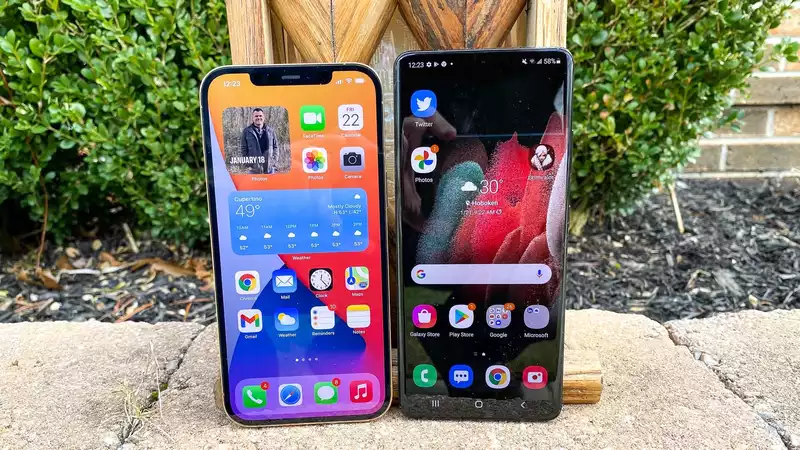Samsung's new Galaxy S21 and Galaxy S21 Ultra are very impressive, with dynamic AMOLED displays, powerful zoom capabilities, and sleek designs In fact, Samsung's new flagships surpass the iPhone 12 in several ways
Since it is too late for Apple to do anything about the iPhone 12 stack-up, our attention turns to the iPhone 13, which is estimated to be released this September There are already several rumors about its specs and design, some of which are exactly what Apple needs to dominate our best phones list
While the fact that it runs iOS may be enough to sell the iPhone 13 to some, others are taking a closer look at the hardware and specs to see how it will match up with the Galaxy S21 Below are the main areas where the iPhone 13 needs to improve and what it needs to do to succeed
It's hard to describe the feeling to someone who has never tried a 120Hz display, but scrolling through menus, social media feeds, and web pages will feel much smoother Both the Galaxy S21 and S21 Ultra have dynamic 120Hz displays that dial down the refresh rate depending on the content on the screen
The S21 ranges from 48Hz to 120Hz, while the S21 Ultra ranges from 10Hz to 120Hz All four iPhone 12s, on the other hand, are fixed at 60 Hz
The good news is that the iPhone 13 is rumored to feature a 120Hz display utilizing the same type of LTPO technology that makes the Galaxy S21 series screen dynamic Apple already offers a 120Hz panel on the iPad Pro, but the refresh rate cannot be dynamically adjusted
Apple's iPhone displays have a major weakness in that they take up space in the notch that houses the selfie camera and Face ID sensor; the S21 series uses a less sophisticated under-display fingerprint sensor, but thanks to Samsung is able to keep all displays usable, except for a small central punch hole for the front camera
Apple will not abandon Face ID However, it needs to make the notch less obtrusive while still providing facial recognition capabilities Fortunately, there are leaks showing the iPhone 13 shrinking the notch by combining an infrared projector and sensor
Despite the high expectations for the Covid-19 vaccine, people will continue to use masks in public for the foreseeable future And that's why the iPhone 13's in-screen fingerprint sensor is so important - the iPhone's Face ID does not recognize people wearing masks
We have high hopes that this will happen, thanks to analyst predictions and, more specifically, thanks to the fourth-generation iPad Air, which incorporates a Touch ID sensor in the power button As much as we trust the experts, the iPad Air is evidence that Apple believes that fingerprint scanners are present in the modern mobile device lineup
An under-display sensor would be the easiest option for users and would match the legions of Android phones that already have this feature For example, the Galaxy S21 series has a sensor that is 17 times larger than the previous model, making it easier to unlock
The 100x "space zoom" telephoto camera on the Galaxy S21 Ultra is capable of producing stunning images By comparison, the iPhone 12 Pro Max's maximum digital zoom of 12x appears anemic Even when viewed in terms of pure optical magnification, the S21 Ultra's 10x zoom trumps the 12 Pro Max's 25x zoom
The regular Galaxy S21 and Galaxy S21 Plus offer 30x digital zoom and hybrid 3x optical zoom
One of the challenges the iPhone 13 faces in trying to beat this is that the Galaxy S21 uses a periscope lens for its 10x optical zoom camera Apple is not expected to introduce a periscope camera until the iPhone 14, which would delay this feature until 2022 Therefore, as much as we would like to see the iPhone 13 introduce a new high-power lens, even if Apple upgrades its telephoto camera, the results will not be as good as Samsung's
High-speed 5G will become even more important in the coming years Currently, the Galaxy S21 Ultra is the fastest phone that can achieve a download speed of 3 Gbps, at least under perfectly ideal circumstances Bad news for Apple
Even in everyday use, the Galaxy S21 Ultra beat the iPhone 12's 5G speeds using both AT&T and T-Mobile networks And it all comes down to the modem
The iPhone 12 was heavily marketed with its 5G speeds, so it simply cannot lose the competition to Samsung's latest model Fortunately for Apple, it will likely use Qualcomm's X60 5G modem, the same one used in the S21 series With its own tweaks, it is quite possible for Apple to reclaim the 5G speed crown and benefit from the X60's superior power efficiency
Despite having a much smaller battery than a typical Android phone, the iPhone still offers the best battery life on the market However, the S21 Ultra's mix of a high-capacity battery and a new, efficient display design allowed the Galaxy S21 to beat the iPhone 12 Pro Max in battery life tests
The Galaxy S21 also outperformed the regular iPhone 12 in battery life However, Samsung's Adaptive Display mode puts a strain on durability, so the best results will be achieved in 60Hz mode
There are several routes Apple could take to improve this; it could increase the size of the iPhone 13's battery; it could increase the battery's capacity by a few hundred watts; or it could increase the battery's capacity by a few hundred watts Similarly, it could rely on more efficient components, such as the rumored adaptive refresh rate of the LTPO display or the reduced power consumption of the new 5G modem










Comments